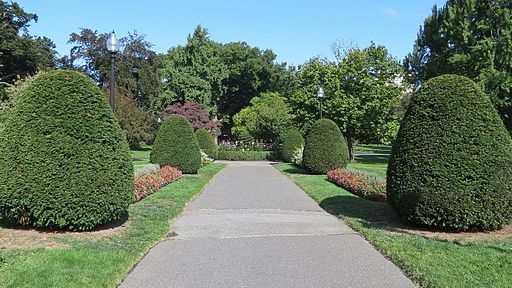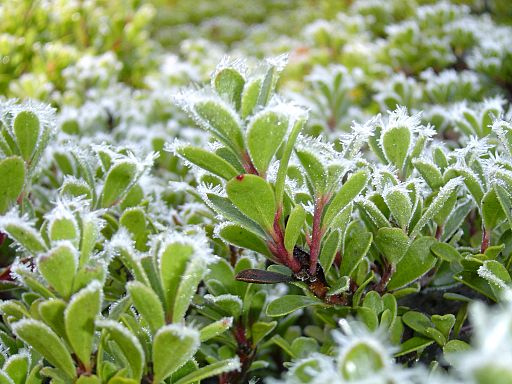Careful with that Axe (at last)
Late summer and early fall is the worst time to prune, and late winter and early spring is the best time. The reason for leaving trees and shrubs alone from August through October (the timing changes depending on the first frost date where you live) is that during frost-free weather pruning encourages new growth, yet the first frost is not far off. If the plant puts out tender new growth at this time of year, a frost may damage or kill the new growth, wasting the the energy the plant just put into top growth at a time when it should be drawing its energy toward its roots in preparation for winter dormancy.
For most trees and shrubs, February through April is the best time for pruning because the plant is dormant, yet it will break dormancy soon and the flush of energy to its top growth will help heal the pruning cuts and cover them. There are exceptions to this rule, and a maple tree is one. Any maple tree produces copious sap in late winter and early spring, not just the sugar maple from which we derive maple syrup. Wounding – and yes, a pruning cut can amount to just that – a maple at that time of year results in excessive bleeding of sap, weakening it. It is better to prune a maple in the summer, when the sap does not run as freely.
Proper pruning technique is necessary in allowing a tree or shrub to to heal a cut. Do not leave stubs! A plant cannot close over a stub, and the stub eventually dies yet remains on the living plant for an inordinate time. The stub then becomes a route for insects and fungi to the interior of the plant. Pruning to the branch collar on trees and to a bud on shrubs allows the plant to seal a cut much sooner, diminishing the opportunity for pests to infest live wood.

Boston Public Garden, Massachusetts; photo by Flickr user Robert Linsdell.
Shearing is a form of pruning that makes cuts willy-nilly as far as the plant is concerned, but which to people presents the plant at a uniform shape and size, the effect of which is a matter of personal taste and opinion. At no time is shearing a boon to a plant’s health, though some plants, such as boxwood and privet, are better able to tolerate it than others. The cumulative effects of this detrimental practice are evident after several years as the plant ends up with leaves growing on its outer shell only and no leaves growing inside of that, and the outer shell becomes stiff as the branches thicken. The interior clogs over time with leaves and twigs falling from the shears, allowing fungus to grow and eventually degrade the bark. The remedy for shearing is patience to make pruning cuts by hand in the proper place as far as the plant is concerned, rather than clipping it for the sake of neatness as if a living plant was inert like hair. But as always in our culture, patience is in short supply.
– Izzy 

